Catocala orba
|
|
Updated as per personal communication from Rick Gillmore, May 7, 2007
Updated as per personal communication from Vernon Brou, May 13, 2007
|
Catocala orba
kah-TOCK-uh-lahmOR-buh
Kusnezov, 1903
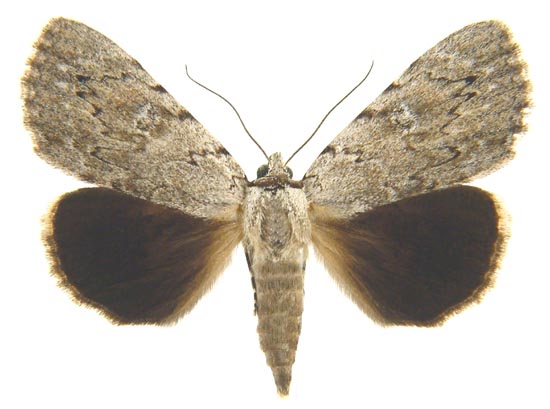
Catocala orba, Louisiana, courtesy of Vernon Antoine Brou.
This site has been created by
Bill Oehlke at oehlkew@islandtelecom.com
Comments, suggestions and/or additional information are welcomed by Bill.
| TAXONOMY:
Superfamily: Noctuoidea
Family: Noctuidae
Group: Noctuinina
Subfamily: Catocalinae
Genus: Catocala, Schrank, 1802
| |
MIDI MUSIC
"Moon River"
copyright C. Odenkirk
MIDI CITYON.OFF
<bgsound src="moon.mid" LOOP=FOREVER>
|
DISTRIBUTION:
The Orba underwing, Catocala orba
(wingspan: 40-45mm),
flies from
Massachusetts (rare if present; doubtful) south to
Georgia and
Florida, west
to
Texas, and as far north as
Mississippi.
In
Louisiana, Vernon Brou reports he has taken it in the parishes of
St. Tammany and Natchitoches.
It has also been recorded in
Arkansas,
North Carolina and
South Carolina.
The forewing is a uniform grey with light lines and poorly
defined spots. The am and pm lines almost disappear half way in their approach toward the inner margin.
The subreniform spot is open and concolorous, scarcely noticeable.
The hindwing underside is completely black. The
hindwing fringe is unbroken and slightly off white, somewhat grey.
In some print Orba is described as possibly
a slightly larger subspecies or form of miranda. Vernon Brou
indicates it is distinct from Catocala miranda.
Catocala orba courtesy of J.K. Adams. |
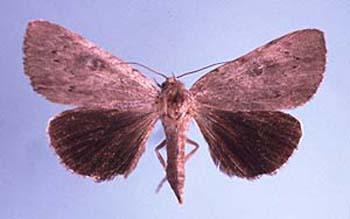
|
FLIGHT TIMES AND PREFERRED FOOD PLANTS:
Catocala orba are on the wing in May in Texas
and Louisiana (peak in May, also flies in June) and from June
to late July elsewhere, possibly into August.
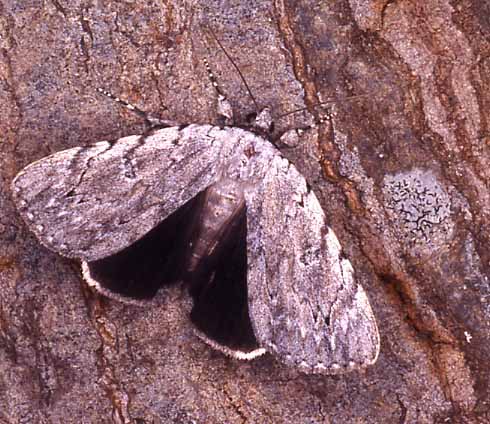
Catocala orba,
Marion County, Florida, courtesy of Leroy Simon.
Rick Gilmore writes, May 7, 2007, "C. orba is a hawthorn
feeder. I am the first person to rear C. orba, C. miranda,
C. grisatra and C. louiseae. All this was published in the
Southern Lepidopterists News, in the seventies.
C.orba, C. miranda and C. grisatra are all hawthorn
feeders, while C. louiseae is a blueberry feeder."
ECLOSION:
Adults eclose from pupae at soil surface.
SCENTING AND MATING:
Catocala orba females
emit an airbourne pheromone and males use their antennae to track the
scent plume.
EGGS, CATERPILLARS, COCOONS, AND PUPAE:
Eggs are deposited on
tree bark in the fall and hatch the following spring.
Larval Food Plants
Listed below are primary food plant(s) and alternate food plants.
It is hoped that this alphabetical listing followed by the common
name of the foodplant will prove useful. The list is not exhaustive,
although some species seem very host specific.
Experimenting with closely related foodplants is worthwhile.
Crataegus ......
|
Hawthorn
|
This page is brought to you by Bill Oehlke and the
WLSS. Pages are on space rented from Bizland. If you would like to become a "Patron of the Sphingidae/Catocala Sites",
contact Bill.
Please send sightings/images to Bill. I will do my best to respond to requests for identification help.
Enjoy one of nature's wonderments: Live Saturniidae (Giant Silkmoth) cocoons.

|

To show appreciation for this site, click on the flashing
butterfly to the left, a link
to many worldwide insect sites. |
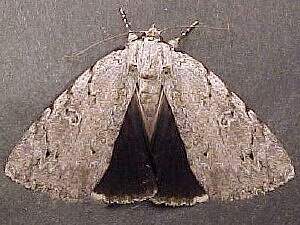
Catocala orba on my home computer only.
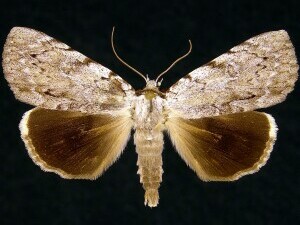
Catocala orba on my home computer only.






